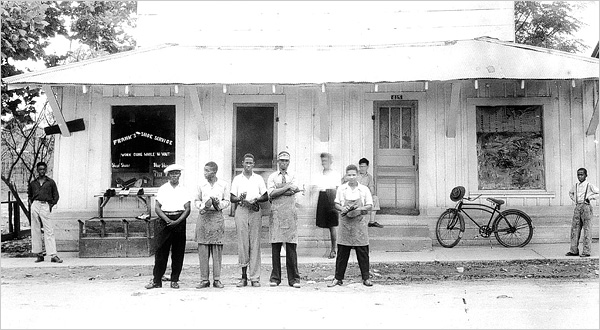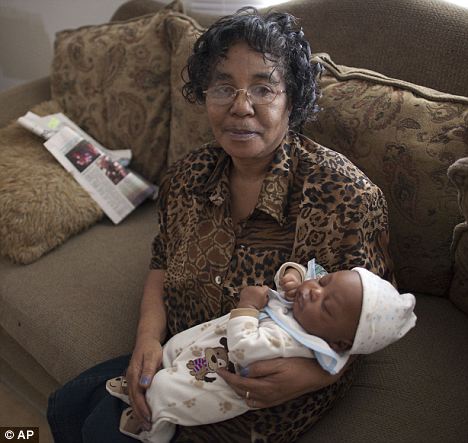
Good Morning POU.
We continue our series on Unsolved Civil Rights Era Murders. Today we review the murder of Frank Morris.
Rosa Williams grew up in Ferriday, La. in the 1960s. She says the code of conduct in her southern town was clear:
“We stayed in one place and white people stayed in one place, and we didn’t associate with each other or nothing like that,” Williams recalls.
Williams’ grandfather, Frank Morris, apparently broke that code of conduct. He owned a shoe repair shop and was the only businessman in town who served both black and white customers.
In the middle of the night on December 10, 1964, a group of men set fire to the shop, where her grandfather was sleeping in the back room. He died four days later from the third-degree burns that covered his body. Authorities suspected the Ku Klux Klan, and the murder was the subject of two F.B.I. investigations in the 1960s. But no one was ever charged with Frank Morris’ murder.
His granddaughter Rosa Williams is 58 now, but when she talks about her grandfather it’s as if she were still a 12-year-old girl grappling with his death.
“I don’t understand why they chose to kill him, but they did,” she says in a lilting, raw voice. “I didn’t know that people would do things like that to someone just out of hatred.”
“Get back in, nigger”
Frank Morris was asleep in the back bedroom of his shoe repair shop when the sound of breaking glass woke him. In the dark of early morning, he walked into his shop and could see two white men standing outside. One was pouring gasoline around the base of his shop and breaking windows. As Morris moved toward the front door, he saw the other man pointing a single-barrel shotgun at him.
“Get back in there, nigger,” the man with the shotgun barked.
Morris saw the man with the gasoline can light a match and throw it inside. Morris’ shop, which the men had soaked on the inside before Morris awakened, became an instant inferno.
As he tried to run outside, the man with the gun repeated, “Get back in, nigger.”
On that morning of December 10, 1964 in Ferriday, Louisiana, Morris was about to become one of scores of unsolved race murders in the South from the civil rights years. He was 51 years old, gregarious, and known for being a fine craftsman. His business catered to black and white customers, and many people of both races claimed him as a friend. He had steered clear of civil rights activity.
Among blacks, he was respected because he ran a good business, gave their sons jobs, and taught them how to work hard and treat people well. White customers, including women, felt comfortable enough to wait inside for their shoe repairs, banter with Morris, and allow their children behind the counter so Morris could show them how to cut leather.
In 1964, that breach of the racial barrier may have been sufficient reason for the Ku Klux Klan to act against Morris. That year, just as Freedom Summer was bringing hundreds of young people to push for civil rights in Mississippi, the Klan had announced an offensive in retaliation, and three civil rights workers had been killed in Philadelphia, Mississippi.
The Ferriday-Vidalia area of eastern Louisiana, and the Natchez area just across the Mississippi River, had several high active Ku Klux Klan organizations at the time. An ongoing federal investigation into the Klan and political corruption in the area had shown that the tentacles of both reached deeply into law enforcement there.
Inside his shop that morning, Morris was quickly engulfed in flames. He ran to a back room, through a back door and toward a service station next door. He was on fire as he ran. Two police officers who were near the scene took him to a hospital.
To nurses who knew him, he was unrecognizable. One of his closest friends, 94-year old Rev. Robert Lee Jr., visited Morris and recalled to Concordia Sentinel editor Stanley Nelson in 2008: “Only the bottom of his feet weren’t burned. He was horrible to look at.”
Morris survived for four days in the local hospital. Friends, FBI agents, pastors and family visited. One by one, they tried to get Morris to identify his assailants. One by one, several would tell Nelson years later, they left believing Morris was holding back his attackers’ identity—out of fear that he or his family would suffer retaliation.
Morris, heavily-sedated and sometimes confused as he struggled through conversations, said the men were white. Yes, he’d seen them before, maybe in the store. He gave a sense of their heights, said what one was wearing, said what town he thought they worked in.
On a couple of occasions, he gave up another nugget of information: Rev. Lee recalled Morris saying the attackers were “two white friends.” A former mayor said Morris told him, “I thought they were my close friends.”
But he never uttered a name.
The FBI began investigating within hours after the fire. They interviewed many people, including three workers at the local International Paper plant, employees from Armstrong Tire & Rubber plant, and law enforcement officers. They generated hundreds of pages of documents and focused considerable attention on a particularly violent Klan offshoot, the Silver Dollar Group.
Some people who may have known what happened disappeared quickly. One was a black man who happened to be walking by Morris’s shop when the two white men were standing outside. His house was hit twice by shotgun blasts; he then was visited by sheriff’s deputies who told him to leave town, his son told Nelson two years ago.
Sons of the leading Klansmen in town told Nelson their father, despite his racist attitudes, liked Morris and blamed the attack on two rogue Klansmen who complied with the enraged Klan leader’s order to leave town.
No one was ever charged and, for the next 44 years, Morris and the public memory of him disappeared into the vapor of history. There was passing reference to him in a long-ago book about the FBI. But he otherwise became a cipher. His family moved away, law enforcement and the newspaper lost interest in him, and the people who murdered him continued to live freely, fearlessly and with impunity.
When Morris’ name popped up on a 2007 list of unsolved civil rights murders in the South’s difficult past, Stanley Nelson, editor of the Concordia Sentinel, became curious. Others dove into the case as well, particularly law professors Janis McDonald and Paula Johnson of the Syracuse University School of Law.
Now, 29 months later, Nelson has turned his curiosity into steady, sure-footed investigative reporting that has produced 122 stories about the murder, about the violence and venality of the Silver Dollar Group, and about the racism and corruption that permeated local law enforcement in the 1950s and 1960s.
Nelson’s stories have turned up long-ignored witnesses and eyewitness accounts from that evening, including two of Morris’ employees whose mother had not allowed them to tell the FBI that Morris had had a visit the day before the fire from three white men who were yelling at Morris and “mad as hell” about something.
He has interviewed FBI agents, pastors and others, white and black, who spoke with Morris just before he died, and Nelson has published transcripts of Morris’ deathbed statements. He has spoken at length with sons of a deceased Klansman who have revealed an inside view of the Silver Dollar Group. He has reviewed hundreds of pages of FBI documents, seen diagrams and photos, and has covered every potential angle of the story.
In May 2007, two months after Nelson began reporting on the Morris murder, the FBI reopened the case. More than a year later, the FBI offered a $10,000 reward. Earlier this year, federal and state prosecutors said they were working together to gather evidence they hoped to take to a grand jury.
More than a dozen men named as suspects in FBI documents are no longer alive. But others who are highly likely to have direct knowledge of the murder and murderers, including members of the Silver Dollar Group, are still alive.
One man, Arthur Leonard Spencer, 71, of Rayville, has been implicated by at least three people who knew him well, including his son.
Case re-opened
The U.S. Department of Justice re-opened the case in 2013, but closed its second probe into the December 10, 1964, arson murder of Frank Morris after what it says was an “exhaustive investigation conducted in the 1960’s and over the last few years (that) did not definitely determine who was responsible for the murder.”
In a letter to Morris’ granddaughter, Rosa Williams, the Justice Department also noted it and the FBI have run out of leads and would have been unable to prosecute the case anyway because “the men likely responsible for the death of your grandfather are deceased.”
Paige M. Fitzgerald, deputy chief in charge of department’s Cold Case Initiative, reports in the undated four-page letter that six Klansmen (all now deceased) were identified as suspects. Conspicuously absent from the list is Frank DeLaughter, a Concordia Parish Sheriff’s Office deputy in 1964. One of the FBI’s agents from the Civil Rights-era, whose work helped send DeLaughter to federal prison in two other cases decades ago, told The Sentinel in 2011 he believed the deputy engineered the arson

Rosa Williams, granddaughter of Frank Morris, holding her grandson (2010)
Williams, who was 12-years-old and living in Ferriday when her grandfather was murdered, said two FBI agents delivered the closure letter to her home in Las Vegas on Jan. 9, 2014.
“I cried a little bit,” she said, “but I wasn’t really surprised.”


